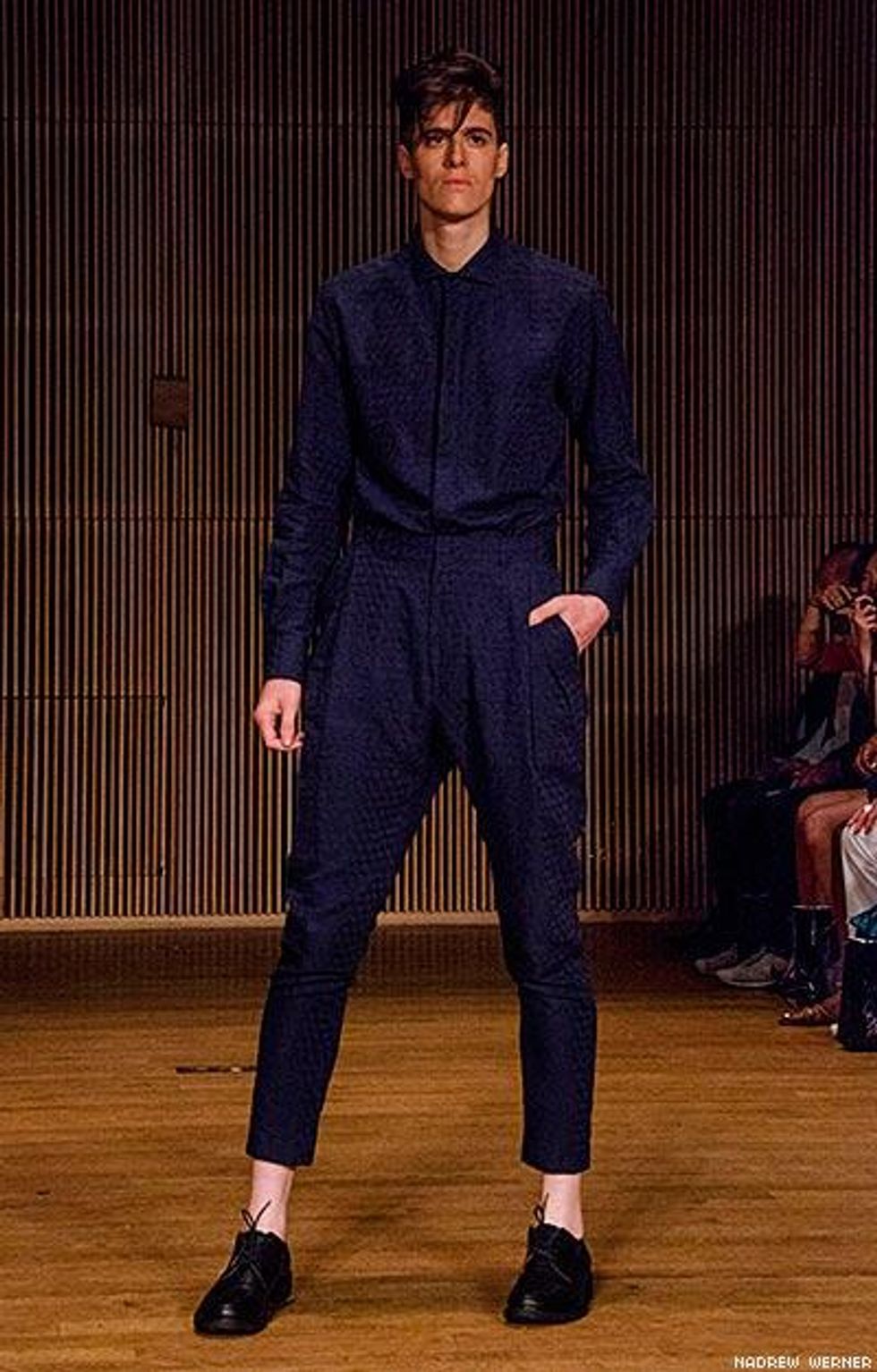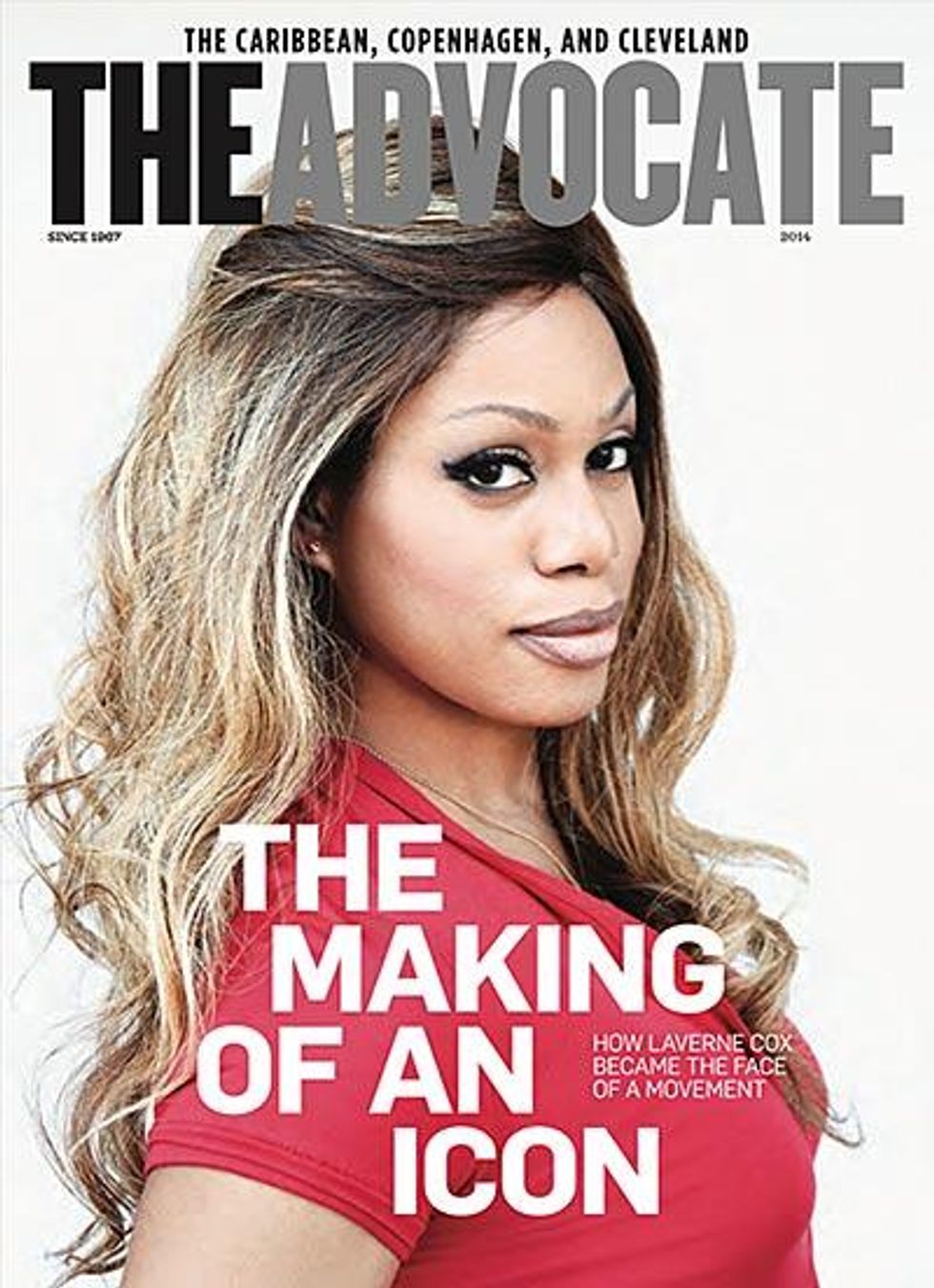
As she preps for a queer fashion show at the Brooklyn Museum, the editor in chief of a style site for masc women and trans individuals says clothes can change society.
September 02 2015 5:45 AM EST
By continuing to use our site, you agree to our Privacy Policy and Terms of Use.

Above: Saint Harridan models on dapperQ runway at the Brooklyn Museum.
On a recent Huffington Post Live segment exploring queer style, I stated that queer style is not simply an "of-the-moment trend" but rather a social movement. My words were soon quoted all over the blogosphere. But not everyone agreed with my views. Some countered that queer style is just another money-making venture benefiting the fashion industry and does not create any tangible, meaningful, or lasting change. I respectfully disagree.
Queer style is systemically rooted in gender nonconformity and intrinsically tied to our identities. It dismantles limiting style rules that have been systematically employed as a means of symbolically and literally perpetuating restrictive binaries and oppressing freedom of expression. Queer style is a fashion revolution, one of the most stylish forms of protest of our generation. Fashion has historically been political, particularly for marginalized groups. From the flapper dress to the Zoot suit to Laverne Cox and Caitlyn Jenner gracing the covers of mainstream glossies, how communities and individuals express themselves through clothing can be a form of visual activism, even when that may not have been the original intent.

The LGBTQ community is at the forefront of revolutionizing the way in which we look at garments in relation to our gender performance and expression. Queer style exemplifies the basic principle that style is a personal, curated, artistic reflection of who we are on the inside, and by fearlessly breaking norms, we have created a social movement that enables every member of our society to benefit from less restrictive, less oppressive ways of expressing ourselves.
Of course, the fashion industry is always looking for new markets and trends from which to generate profits, so queer style is "in" right now from an economic perspective. Fashion designers and media are feverishly trying to capitalize on the "gender neutral" and "gender ambiguous" trend, as noted recently in the New York Times article "In Fashion, Gender Lines Are Blurring."
According to the Times, Kimberly Wesson and Aimee Cho, the creative visionaries behind the gender-free label 1.61, are "among the latest in a raft of designers to capitalize on fashion's gender blur, that narrowing of the sexual divide that earlier this year emerged on the runways of top tier designers like Rick Owens and Alessandro Michele of Gucci, each bent on eroding the once rigid demarcation between conventionally feminine and masculine clothes." (The author of the article attributes this phenomenon to a revival of '60s and '70s unisex trends, but does not give much credit to the growing visibility and success, both socio-politically and economically, of queer style.) I am not sure if the goal of the industry is to truly support and embody society's changing views on gender expression or if brands are trying to simply cash in on a trend, or both. But I do hope that the fashion industry continues to move in the direction of permanently abandoning unattainable, antiquated expectations and doesn't write off this greater freedom of expression as a trend when the next big thing comes along, especially considering that "androgyny" has a history of being "in" one day and "out" the next.

Irrespective of whether the fashion industry recognizes queer style as profitable, legitimate, or trendy, queer style will remain political and will continue to flourish as a social movement. As fashion critic and journalist Alexander Fury once stated, "Clothes are politicized objects, a sartorial billboard, a manifesto on your back. You can still be arrested for wearing the wrong thing in the wrong place -- and, beyond the laws of basic public decency, that's because people often don't want to hear what your garments are telling them."
On September 17, during New York Fashion Week, the Brooklyn Museum is hosting a fashion show centering on queer style. Click here for more details.

Charlie Kirk DID say stoning gay people was the 'perfect law' — and these other heinous quotes